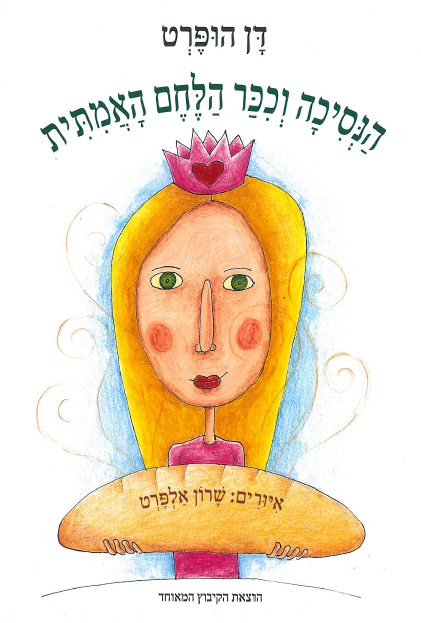מורים יקרים,
איך מגיעים לשולחננו הקוסקוס, הקטשופ, הלחם? את הנסיכה הצעירה זה לא מעניין. היא חושבת שכל הדרוש לה כדי לאכול לשובע, הוא לצווֹת שיביאו לה מאכל – והמנה תוגש מיד!
נשמע מוכר? ילדים רבים עדיין לומדים להמתין בסבלנות, להעריך מאמץ ועבודה קשה, ולהביע תודה לאלה שעוזרים להם. אנו מקווים שהסיפור החינני של הנסיכה ג'בטה יסייע בטיפוח כבוד לעבודת האדמה, רגישות לעמל ולמאמצי אחרים והכרת הטוב בקרב ילדי הכיתה.
קריאה נעימה!
יְגִיעַ כַּפֶּיךָ כִּי תֹאכֵל, אַשְׁרֶיךָ וְטוֹב לָךְ (תהלים קכ"ח, ב)
בחיפוש אחר "כיכר הלחם האמיתית" לומדת הנסיכה ג'בטה להעריך מאמץ ועבודה קשה ואף ליהנות מהם. הפסוק מסֵפר תהילים מדגיש את הסיפוק שחש אדם האוכל מפרי עמלו. כולנו מכירים את התחושה הטובה כאשר אנחנו מתאמצים ומשיגים משהו במו ידינו. השגת דבר מה על ידי מאמץ, שקידה ועבודה קשה מטפחת בקרב ילדים צעירים את תחושת העצמאות שלהם, וכן סיפוק וגאווה.
אפשר להזכיר לתלמידים את הפסוק מתוך ספר בראשית, בסיפור אדם וחווה: "בְּזֵעַת אַפֶּיךָ תֹּאכַל לֶחֶם" (בראשית ג, יט). אנשים רבים צריכים לעבוד קשה על מנת להשיג פרנסה. פעמים רבות ילדים רואים את הדברים שקונים או מקבלים כמובנים מאליהם, ואינם מודעים לעבודה הקשה שהייתה כרוכה בהכנתם.
"עוֹבֵד אַדְמָתוֹ יִשְׂבַּע לָחֶם" - ערך עבודת האדמה
כל מי שפעם גידל פרי או ירק יכול בוודאי להזדהות עם הסיפוק שחש אדם האוכל מפרי עמלו. נושא עבודת האדמה רלוונטי מאד לקראת חג הביכורים - חג השבועות. שמחת הביכורים מסמלת את סופו של תהליך ארוך ומושקע מצד החקלאים. גידול המזון שלנו דורש עבודה קשה ושיתוף פעולה עם הטבע, וחקלאים בכל דור מקדישים תשומת לב רבה לעונות השנה, לגשם, ולשמש. הסיפור מזַמן לתלמידים היכרות עם עבודת האדמה ועמל קשה, ומזכיר את חשיבותם בהבאת מזון לשולחננו.
"המוציא לחם מן הארץ" - מהחיטה אל הלחם
הלחם הוא מרכיב חשוב בתפריט בני האדם באזורנו. כדי לסמל את חשיבותו קבעו חכמים ברכה מיוחדת שמברכים לפני אכילת לחם: "המוציא לחם מן הארץ". קיימת גם מסורת לנהוג כבוד בלחם, להשתדל לא להשחית ולא לזרוק אוכל בכלל, ולחם בפרט. החשיבות של הלחם נובעת, כאמור, גם מהקושי והמאמץ הכרוכים בהכנתו. כיום, עם ריבוי המוצרים בחנויות וברשתות השיווק, לפעמים אנו שוכחים את הערך של האוכל המוגש על שולחננו.





